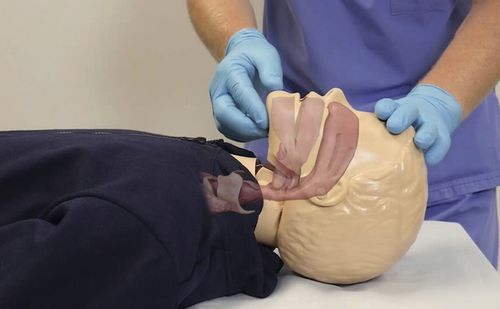

- Products
- Catalogs
- News & Trends
- Exhibitions
Evaluation simulation module breathingCPRfor basic life support
Add to favorites
Compare this product
Characteristics
- Procedure
- evaluation, breathing, CPR
- Application
- for basic life support
- Type
- child
- Technology
- web-based
Description
Basic life support (BLS) is a basic level of medical care used to help sustain a person who is experiencing cardiac arrest or respiratory failure until they can be given full medical care by an advanced responder. BLS can be used in any scenario where breathing or heartbeat has been compromised
Introduction
Step 1 - Preliminary actions
Step 1.1 - Verify scene safety
Step 1.2 - Assess responsiveness
Step 1.3 - Call for help
Step 1.4 - Activate emergency response system
Step 2 - Assess vital signs
Step 2.1 - Assess circulation
Step 2.2 - Assess breathing
Step 2.3 - Assess next course of action
Step 3 - Perform cardiopulmonary resuscitation (CPR)
Step 3.1 - Chest compressions
Step 3.2 - Ventilation
Step 3.3 - Fetch defibrillator
Step 4 - Defibrillation
Step 4.1 - Position the defibrillator
Step 4.2 - Start the defibrillator
Step 4.3 - Place the electrode pads
Step 4.4 - Begin defibrillation
Step 5 - Evaluation and monitoring
Describe pre-procedure considerations for BLS for a child.
Describe and demonstrate correct preliminary actions for BLS for a child.
Describe and demonstrate correct procedure for assessing vital signs for BLS for a child.
Describe and demonstrate correct procedure for performing CPR for BLS for a child.
Describe the differences in procedure and technique for 1-rescuer and 2-rescuer situations.
Describe and demonstrate correct procedure for performing defibrillation for BLS for a child.
Describe and demonstrate correct procedure for post-BLS evaluation of children.
The SIMTICS modules are all easy to use and web-based. This means they are available at any time as long as the learner has an internet connection.
Related Searches
*Prices are pre-tax. They exclude delivery charges and customs duties and do not include additional charges for installation or activation options. Prices are indicative only and may vary by country, with changes to the cost of raw materials and exchange rates.
